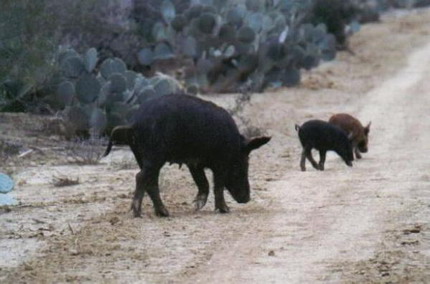Trapping, especially where feral hog densities are high, is probably the most effective control method. However, traps may not be effective during fall and winter when acorns or other preferred natural foods are available. Hogs seem to prefer acorns over grain and other baits, probably due to the larger percentage of fat found in acorns. Leg snares and hunting may be more productive control methods during fall and winter, but usually require considerably more effort and should not be considered a long-term control stragegy. Stationary corral-type traps and box traps have been used with success, and will help to control numbers, but will not eliminate a hog population.
The corral or stationary trap is permanent and should be constructed in locations where large populations of hogs are evident and where more than one hog can be trapped at a time. It is recommended that the trap be built out of steel fence posts and 2 x 4-inch welded 12-gauge wire fencing. A gate frame can be made from 2 x 4-inch boards. Make doors from 3/4-inch plywood and mount them so that they open inward and close automatically with screen door springs. Heavier material may be used for the gate and frame in areas where exceptionally large hogs are to be trapped. Also, more steel fence posts may be needed to reinforce the wire fencing. The wire fencing should be put on the ground as well as at the top of the trap to prevent hogs from going under the sides or over the top. Fasten the sides to the top and bottom. Continue reading Trapping Feral Hogs
